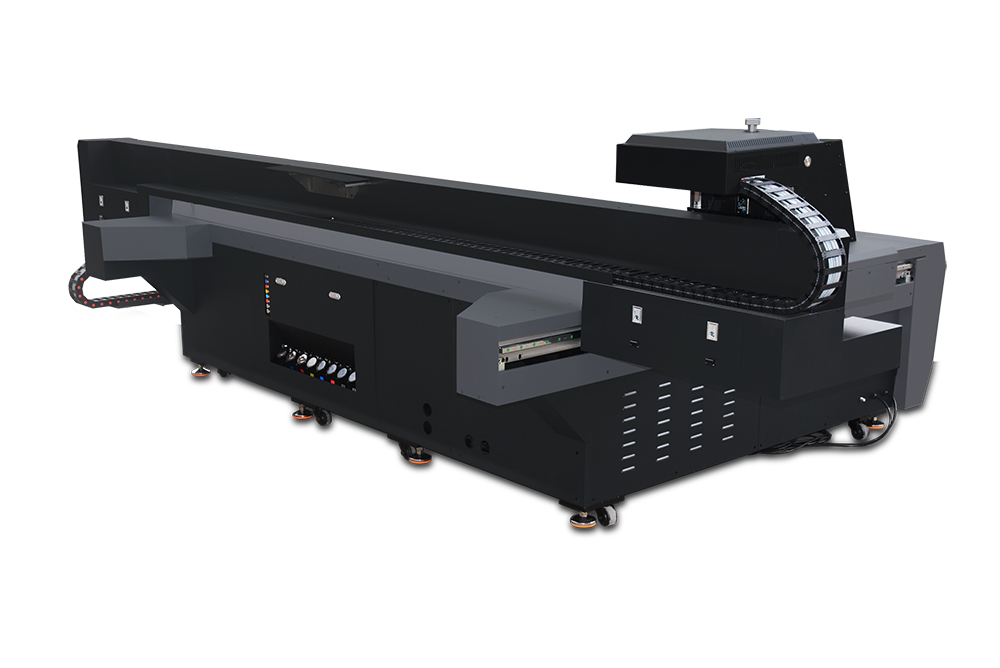UV Flatbed Printer: Printing on Wood and Other Natural Materials
In the dynamic world of printing technology, UV flatbed printers have emerged as a game-changer, especially for businesses and creators aiming to print directly onto wood and other natural materials. These printers offer unparalleled versatility, high-quality outputs, and the ability to work with a vast range of substrates, making them indispensable for industries such as home decor, furniture manufacturing, art creation, and even small-scale craft projects. This blog post delves into the capabilities of UV flatbed printers, their advantages when working with natural materials like wood, and why they are becoming a staple in creative and industrial settings.

The Versatility of UV Flatbed Printers
UV flatbed printers are renowned for their ability to print on almost any flat surface, including wood, glass, metal, plastics, and fabrics. This versatility is largely due to their use of ultraviolet (UV) light to cure ink instantly upon contact with the substrate. Unlike traditional printers that rely on ink absorption into the material, UV printers lay down ink and then immediately cure it using UV lamps, ensuring the ink adheres firmly and quickly to the surface. This process not only results in vibrant, durable prints but also allows for printing on non-porous materials like glass and metal, which would be impossible with conventional methods.
Printing on Wood: A Natural Fit
Wood, with its unique texture and warmth, is a favorite among artists, designers, and manufacturers. UV flatbed printers excel in printing on wood, offering several distinct advantages. Firstly, the ink adheres exceptionally well to the porous surface of wood, capturing intricate details and vivid colors. This makes UV printing ideal for creating custom wooden signs, wall art, furniture panels, and even personalized gifts. The ability to print directly onto wood eliminates the need for additional processes like lamination or varnishing, saving time and resources while maintaining the natural beauty of the material.
Moreover, UV printing on wood is highly durable. The cured ink layer is resistant to fading, scratching, and water damage, ensuring that the printed designs remain vibrant and intact over time. This durability is particularly important for outdoor applications, such as garden signs or outdoor furniture, where exposure to the elements is inevitable.
Enhancing Aesthetics with Texture and Depth
One of the most exciting aspects of UV flatbed printing on wood is the ability to add texture and depth to printed designs. By using special white ink or layering techniques, printers can create a three-dimensional effect, making the printed images appear almost lifelike. This capability opens up a world of creative possibilities, allowing artists to replicate the look of wood grain, stone textures, or even metallic finishes directly onto wooden surfaces. Such effects can transform a simple piece of wood into a stunning work of art or a high-end product, adding significant value and appeal.
Sustainability and Eco-Friendly Printing
In today’s environmentally conscious world, sustainability is a key consideration for many businesses and consumers. UV flatbed printers offer a more eco-friendly printing solution compared to traditional methods. The UV curing process emits fewer volatile organic compounds (VOCs), reducing air pollution and improving indoor air quality. Additionally, the precision of UV printing minimizes waste, as ink is only applied where needed, unlike screen printing or other techniques that often require excess ink and materials.
Furthermore, the durability of UV-printed designs means that products last longer, reducing the need for replacements and, consequently, the overall environmental impact. For businesses and creators focused on sustainability, UV flatbed printers provide a way to produce high-quality, long-lasting products while minimizing their carbon footprint.
Applications Beyond Wood: Exploring Other Natural Materials
While wood is a popular choice for UV flatbed printing, the technology is not limited to this material alone. Other natural substrates, such as cork, bamboo, and even stone, can also be printed on with excellent results. Each material presents unique challenges and opportunities, but UV printers are designed to handle them with ease. For instance, cork’s soft, porous texture can be challenging for some printing methods, but UV printing ensures that the ink adheres firmly, allowing for the creation of beautiful, personalized corkboards or decorative panels.
Similarly, bamboo, known for its strength and sustainability, can be transformed into stunning home decor items or functional products like cutting boards and coasters using UV printing. The natural variations in bamboo’s color and grain add an organic charm to the printed designs, making each piece truly one-of-a-kind.
The Future of UV Flatbed Printing: Innovation and Advancements
As technology continues to evolve, so too does the world of UV flatbed printing. Manufacturers are constantly pushing the boundaries of what’s possible, introducing new features and capabilities that enhance the printing experience and expand the range of applications. For example, advancements in ink formulations now allow for printing on even more substrates, including flexible materials like leather and vinyl, opening up new avenues for creativity and innovation.
Moreover, the integration of digital design tools and software has made UV printing more accessible than ever. Designers and creators can now visualize their ideas in 3D, experiment with different materials and finishes, and produce prototypes quickly and efficiently. This seamless workflow from design to production is accelerating the pace of innovation and enabling businesses to bring new products to market faster than ever before.
Conclusion
UV flatbed printers have revolutionized the printing industry, offering unparalleled versatility, high-quality outputs, and the ability to print on a vast range of natural materials, including wood. Their durability, eco-friendliness, and the creative possibilities they unlock make them an invaluable tool for artists, designers, manufacturers, and entrepreneurs alike. As technology continues to advance, the future of UV flatbed printing looks brighter than ever, promising even more exciting innovations and applications in the years to come. Whether you’re looking to create custom wooden signs, personalized gifts, or high-end home decor items, a UV flatbed printer is a powerful ally in your creative journey.
